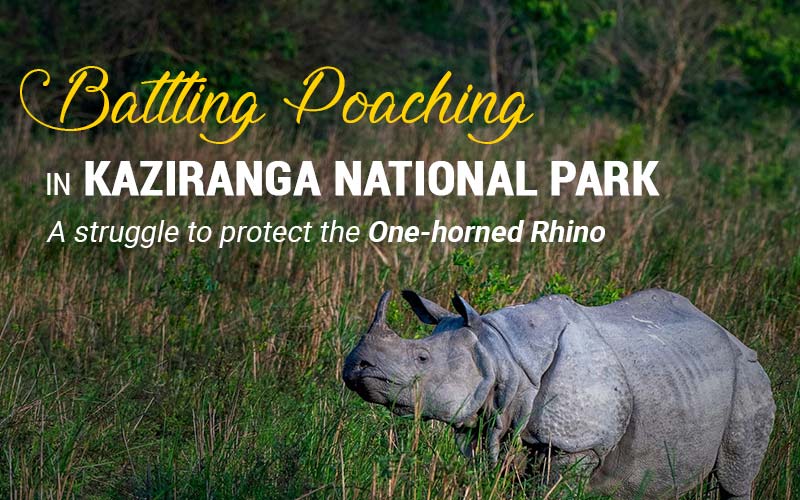
Battling poaching in Kaziranga National Park: A struggle to protect the One-horned Rhino
Kaziranga National Park, located in Assam, India, is a UNESCO World Heritage site renowned for its rich biodiversity. Spanning over 430 square kilometers, Kaziranga is home to two-thirds of the world’s population of the Great Indian one-horned rhinoceros. The park also shelters other wildlife such as elephants, tigers, and a wide variety of birds. However, maintaining this rich biodiversity has not been without challenges.
Poaching has been a significant threat to Kaziranga's wildlife, particularly the one-horned rhino, targeted for its horn believed to have medicinal properties in traditional Asian medicine.
Despite several anti-poaching measures, this illegal activity remains a persistent threat. Poachers often find ways to evade surveillance, driven by the high demand for rhino horns in the black market.
Anti-Poaching efforts and recent incidents
The forest guards and anti-poaching units at Kaziranga are constantly battling against poachers. On May 11, 2024, a fierce gun battle took place in the Agoratoli Range of the national park when forest guards intercepted a group of poachers at around 3 am. The encounter resulted in the death of a poacher. Similarly, on May 21, 2024, a joint operation by Bokakhat Police, Jorhat Forest Division, and Jorhat police successfully nabbed a group of poachers involved in the illicit trade of rhino horns.
Assam recorded zero rhino poaching in 2022 for the first time since 1977. The park is home to about 2,613 rhinos, and the efforts of the Assam Forest Department have been crucial in achieving this milestone.
In 2023, the department recruited over 2,500 frontliners, including 300 young women, to strengthen its anti-poaching efforts. The park currently has 54 female frontliners, comprising forest guards, foresters, and members of the Rhino Protection Force.
With heightened security and anti-poaching squads, Kaziranga made significant progress. In 2021, only two rhinos were poached, and in 2022, none were reported. This marked the first time since 1977 that no rhino poaching occurred in the park. Hollywood star and environmentalist Leonardo DiCaprio praised the Assam Government’s efforts on social media, highlighting this achievement and the increase in the global rhino population to around 3,700.
However, the threat of poaching persists. In 2023, a rhino poaching case was reported, underscoring the need for continuous vigilance.
Historical context of poaching
In the late 1800s and early 1900s, sport hunting was common, and Indian rhinos were hunted relentlessly. By 1908, the rhino population in Kaziranga had decreased to around 12 individuals. Poaching for rhino horn became the primary cause of the species' decline after conservation measures were put in place in the early 20th century. Between 1962 and 2016, a total of 662 rhino poaching cases were reported. The park experienced around 200 cases of rhino deaths due to poaching between 2000 and 2021, with the peak in 2013-2014 when 27 rhinos were killed annually.
In summary
Kaziranga National Park stands as a beacon of hope in the fight against wildlife poaching. The combined efforts of the Assam Government, forest guards, and the community have made significant strides in protecting the one-horned rhino and other wildlife. However, the battle is far from over. Continuous efforts and vigilance are necessary to ensure that Kaziranga remains a safe haven for its diverse inhabitants. By preserving this unique ecosystem, we are not only protecting the wildlife but also maintaining the natural heritage for future generations.
Disclaimer: The opinions expressed in this article are those of the author's. They do not purport to reflect the opinions or views of The Critical Script or its editor.

Newsletter!!!
Subscribe to our weekly Newsletter and stay tuned.

















Related Comments